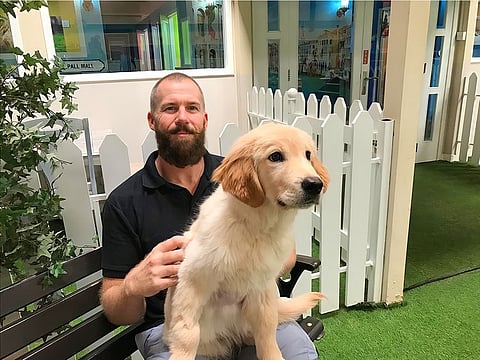My Second Home: Group dog training classes are back — with the focus on owners
The Academy is all about teaching humans how to communicate effectively with their dogs

Having studied animal behaviour for 25 years, not much surprises me these days. But I still get twitchy when I see and hear outdated tactics being used to control and punish dogs who just want to be dogs. Thankfully, the days of rolled-up newspapers, pepper on carpets and a gentle slap started becoming outdated when attitudes and techniques began to prioritise dogs’ well-being and psychological states.
Our My Second Home Training Academy is all about teaching humans how to communicate effectively with their dogs. It’s about learning a language for both parties and bridging the communication divide between the human and fur friend.
Now more than ever, we need to learn the art of two-way communication. Training is no longer about telling your dog what to do, but rather responding appropriately to the communication your dog is sending out into the world.
When we commit to meeting all our dog’s needs, we can use this relationship to steer our pups in the behavioural directions we would prefer over those we don’t, and dramatically improve cooperative behaviour in our homes.
In our Group Classes, our humans learn that the more they respond to the perceived reactive or uncooperative things our dogs do, the more our dogs will believe these are what they are supposed to do.
What we need to remember is that dogs have their own way of communicating and what we sometimes see as wholly inappropriate, is perfectly acceptable and healthy. Our dogs don’t say ‘please stop’ or ‘would you please not approach me’. Instead, they give us other dog body language cues
such as growling, barking, baring teeth, snarling or air snapping. Although these are all perfectly suitable ways for them to communicate, our interruptive feedback loop sadly causes them to believe that this is the way they must always communicate, even when it is not appropriate.
Having our help with all these aspects of understanding, improving two-way communication, and enabling an environment of cooperation, will give you the tools to make the correct inputs — instead of the wrong ones.
Try to remember that your dog will never be ‘trained’. Behaviour is constantly changing to find function. It is how we respond in each moment that will create the dog of either our dreams or nightmares.
See you in Group Class!
Sign up for the Daily Briefing
Get the latest news and updates straight to your inbox

